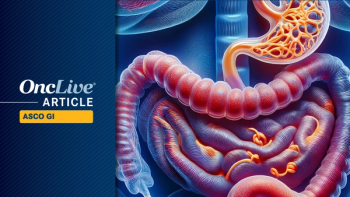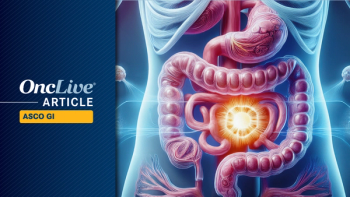
Few Agents Better Than Somatostatin Analogs for Symptom Control in Carcinoid Syndrome
Somatostatin analogs remain the mainstay of medical therapy for symptom control in patients with carcinoid syndrome.
Marianne Pavel, MD
Somatostatin analogs remain the mainstay of medical therapy for symptom control in patients with carcinoid syndrome. Although they rarely normalize levels of 5-hydroxyindoleacetic acid (5-HIAA), main metabolite of serotonin, these agents are effective at reducing the frequency of bowel movements and diarrhea, said Marianne Pavel, MD, at the 2014 Neuroendocrine Tumor Symposium in Nashville, Tennessee. For patients with refractory symptoms, interferon may be of value as add-on therapy.
“The most predominant symptoms are flushing and diarrhea…and while serotonin is a main mediator of diarrhea, it is unclear which [neurotransmitters] are the main mediators of flushing,” she said.
Therapeutic goals in carcinoid syndrome are symptom relief, improvement in quality of life, and prevention of complications related to the syndrome (ie, carcinoid crisis, carcinoid heart disease).
“The ideal drug is one that also provides stabilization of the disease or, even better, tumor shrinkage, but we know that all drugs that we currently use, especially targeted drugs in this field, are rarely associated with tumor shrinkage,” said Pavel, who is professor of medicine, Neuroendocrine Tumor Disease, Charité University Medicine Berlin, Germany. “This is a dilemma because on the one hand you can control the syndrome but you can’t necessarily downstage the patient, which is needed if the patient has a high tumor burden.”
In an effort to achieve these goals, medical therapy should be used in addition to early consideration of debulking surgery and loco-regional therapies for syndrome management.
The mean rates of symptomatic relief with somatostatin analogs range from 63% to 77%.1 Most patients with carcinoid syndrome achieve complete or partial control of symptoms with octreotide LAR. Complete improvement in flushing is observed in half of octreotide LAR-treated patients and 90% have >50% improvement. Diarrhea is completely controlled in about one fourth of patients, and three fourths experience >50% improvement. These improvements occur despite normalization of 5-HIAA in only 5%.
In a cross-sectional observational study of 273 patients with diarrhea related to carcinoid syndrome, 76% with symptoms associated with gastroenteropancreatic neuroendocrine tumors were "completely" or "rather satisfied" with control of their diarrhea when treated with lanreotide AG for >3 months.2
A somatostatin analog may have a beneficial impact on survival as well, said Pavel. In a retrospective population-based analysis of patients 65 years or older, octreotide LAR was associated with a significant 5-year survival benefit for patients with distant-stage disease (hazard ratio, 0.61; P ≤ .001). A benefit was not shown for patients with local/regional stage disease.3
More than 30 years of experience with somatostatin analogs reveal that long-term tolerability is excellent and that most side effects are transient, said Pavel.
Dose escalation is a possibility with somatostatin analogs in the case of refractory syndrome. “Most patients respond to somatostatin analogs for 8 to 24 months, and then there’s an increase in symptoms again that may be associated with a significant increase in tumor burden,” she said. In such patients, improvements in flushing and diarrhea are realized with “above label doses” of octreotide LAR: 40 mg every 4 weeks, 60 mg every 4 weeks, or 30 mg every 3 weeks.4
Phase II data indicate that the investigational somatostatin analog, pasireotide, may promote clinical symptom responses in some patients with advanced neuroendocrine tumors refractory or resistant to octreotide LAR.5 In this study, 27% were responders to pasireotide. Another study comparing pasireotide to dose escalation of octretotide LAR to 40 mg in patients who were refractory to standard-dose octreotide LAR showed no difference in symptom control at 6 months.6
Interferon alpha may be valuable as add-on therapy to somatostatin analogs, said Pavel. Improvement of flushing and diarrhea occurs in about 70% of patients with neuroendocrine tumors treated with interferon alpha, but biochemical response is much lower. Pegylated interferon improved the biochemical response to 70% and is better tolerated than interferon alpha.7 Overall, “somatostain analogs are first-line treatment because they are better tolerated than interferon alpha, which is associated with fatigue and flu-like symptoms and also with bone marrow dysfunction,” said Pavel.
Telotristat etiprate is an inhibitor of serotonin synthesis. In 14 patients with symptomatic carcinoid syndrome and >4 bowel movements per day, an open-label dose escalation study found up to 70% improvement in bowel movement frequency at week 12.8 The improvement was associated with a decrease in the level of 5-HIAA in the urine. A placebo-controlled phase III study of telotristat etiprate in carcinoid syndrome is ongoing.
References
- Modlin IM, Pavel M, Kidd M, Gustafsson BI. Review article: somatostatin analogs in the treatment of gastroenteropancreatic neuroendocrine (carcinoid) tumours. Aliment Pharmacol Ther. 2010;31(2):169-188.
- Ruszniewski P et al. Somatostatin analogs as antitumoral agents in NETs. Data presented at ASCO GI 2014. Available at: http://gicasym.org/ancillary-education-events.
- Shen C, Shih YC, Xu Y, Yao JC. Octreotide long-acting repeatable use among elderly patients with carcinoid syndrome and survival outcomes: a population-based analysis. Cancer. 2014;120(13):2039-2049.
- Strosberg J, Weber J, Feldman M, Goldman J, Almhanna K, Kvols L. Above-label doses of octreotide-LAR in patients with metastatic small intestinal carcinoid tumors. Gastrointest Cancer Res. 2013;6(3):81-85.
- Kvols LK, Oberg KE, O'Dorisio TM, Mohideen P, de Herder WW, Arnold R, et al. Pasireotide (SOM230) shows efficacy and tolerability in the treatment of patients with advanced neuroendocrine tumors refractory or resistant to octreotide LAR: results from a phase II study. Endocr Relat Cancer. 2012 Sep 14;19(5):657-666.
- Wolin EM, Jarzab B, Eriksson B, Walter T, Toumpanakis C, Morse M, et al. A multicenter, randomized, blinded, phase III study of pasireotide LAR versus octreotide LAR in patients with metastatic neuroendocrine tumors (NET) with disease-related symptoms inadequately controlled by somatostatin analogs. ASCO Annual Meeting 2013. Available at: http://meetinglibrary.asco.org/content/113218-132.
- Pavel ME, Baum U, Hahn EG, Schuppan D, Lohmann T. Efficacy and tolerability of pegylated IFN-alpha in patients with neuroendocrine gastroenteropancreatic carcinomas. J Interferon Cytokine Res. 2006;26(1):8-13.
- Data from Lexicon Pharmaceuticals.
<<<

























































































